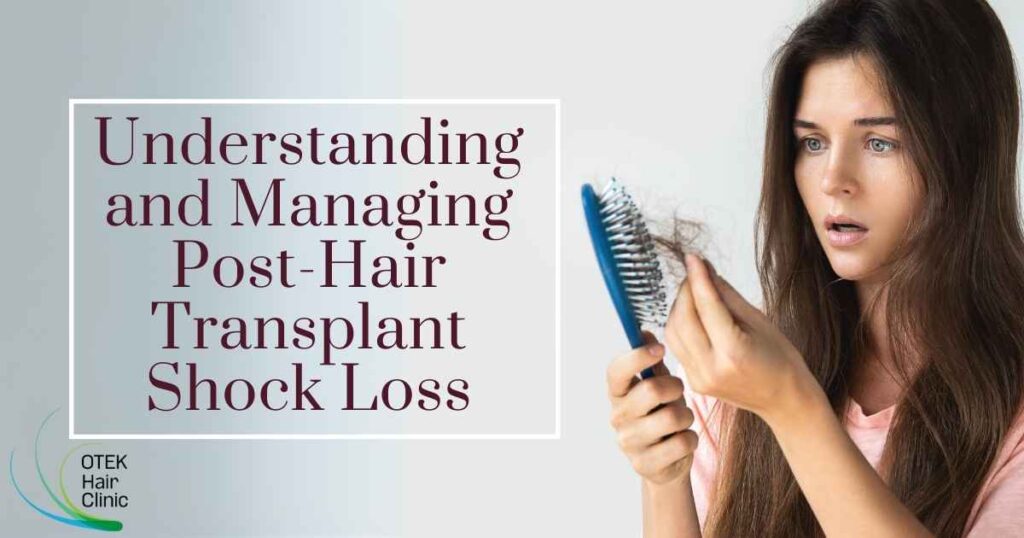Hair loss is a common concern for many individuals, impacting self-esteem and confidence. Fortunately, advancements in medical science have made hair transplantation a viable solution for those seeking to restore a fuller, more natural-looking head of hair. However, the journey to hair restoration is not without its challenges, and one of the most significant hurdles patients may encounter is post-hair transplant shock loss. In this comprehensive guide, we will delve into the intricacies of post-transplant shock loss, providing patients with a detailed understanding of its causes, duration, and effective management strategies.
Understanding Post-Hair Transplant Shock Loss:
Post-hair transplant shock loss is a phenomenon characterized by the shedding of transplanted and native hair follicles in the weeks following a hair restoration procedure. This shedding can be alarming for patients, leading to concerns about the success of the transplant. However, it’s essential to recognize that shock loss is a natural part of the healing process and does not signify a failed transplant. Instead, it is the scalp’s response to the trauma of surgery and the disruption of the hair follicle’s growth cycle.
Causes of Shock Loss:
Several factors contribute to post-hair transplant shock loss, including:
Trauma to the scalp during the transplantation procedure, which can lead to temporary damage to existing hair follicles.
Disruption of the hair follicle’s growth cycle due to surgical intervention, causing hair to enter the resting phase prematurely.
Inflammation and swelling of the scalp following surgery, which can further stress hair follicles and contribute to shedding.
The body’s immune response to the newly transplanted hair follicles, resulting in transient inflammation and shedding as the scalp adjusts to the presence of the grafts.
Duration of Shock Loss:
The duration of post-hair transplant shock loss varies from patient to patient and depends on various factors, including:
Individual healing capabilities and genetic predisposition to hair loss.
The extent and complexity of the hair transplant procedure, with larger sessions and more extensive grafting potentially leading to prolonged shedding.
Adherence to post-operative care instructions, including proper scalp hygiene and medication regimens prescribed by the surgeon.
In most cases, shock loss begins within the first two to eight weeks after the transplant and may continue for several months. However, patients should note that this shedding is temporary, and new hair growth typically begins to emerge as the scalp heals.
Managing Post-Hair Transplant Shock Loss:
Effective management of post-hair transplant shock loss involves several key strategies, including:
Maintaining open communication with the hair transplant surgeon to monitor progress and address any concerns throughout the recovery process.
Following post-operative care instructions diligently, including gentle scalp hygiene, avoiding strenuous activities, and adhering to prescribed medication regimens.
Avoiding behaviors that may exacerbate scalp irritation or inflammation, such as excessive rubbing, scratching, or exposure to harsh chemicals.
Practicing patience and maintaining realistic expectations regarding the timeline of hair growth and recovery, understanding that regrowth may be gradual and incremental.
Conclusion:
Post-hair transplant shock loss can be a challenging aspect of the hair restoration journey, causing distress and uncertainty for patients. However, armed with knowledge and understanding, individuals can navigate this phase with confidence, knowing that it is a temporary setback on the path to achieving their desired results. By following the guidance provided in this comprehensive guide and working closely with their hair transplant surgeon, patients can optimize their recovery and ultimately enjoy the transformative benefits of their hair restoration procedure.

